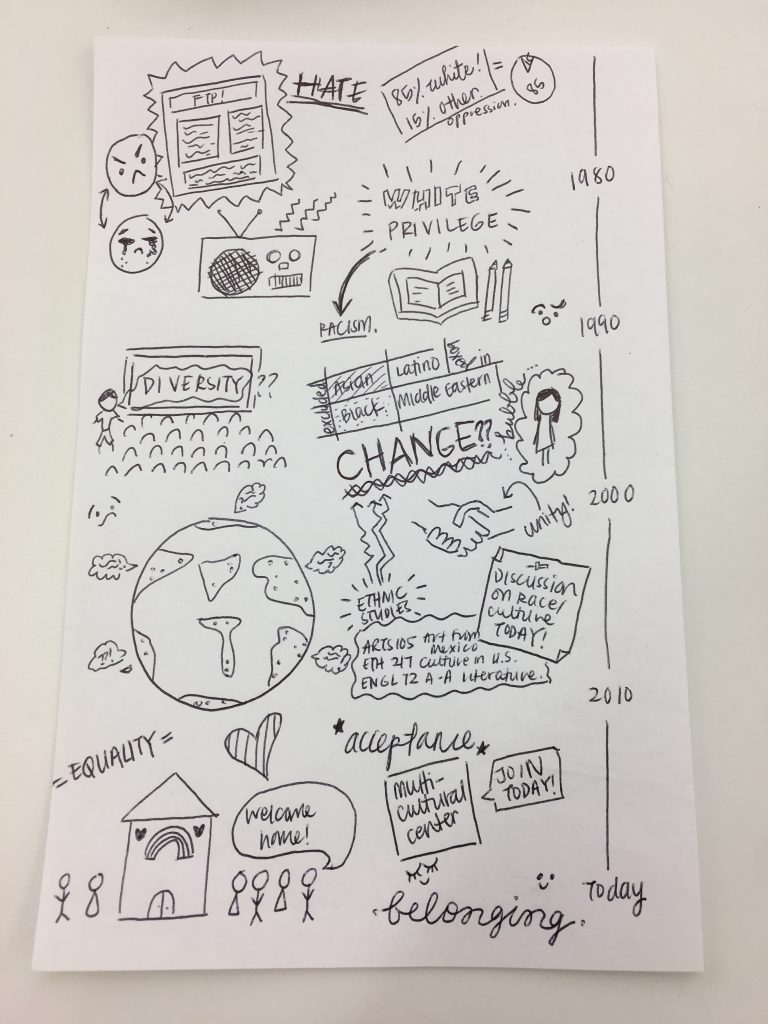Last Updates!
Now that I have finished my multimodal project, it’s time to look back and reflect! Last time, I discussed making a drawing and possibly filming the process, showing you a sneak peek at the drawing itself. Here’s a reminder.

Since then, I’ve enhanced this simple drawing by adding bright colors, more small drawings, and turning it all into a short video. This sounds easy, but it was anything but. I ran in to MANY technical problems with lighting, angling of camera, capturing video, glitchy phones, splitting up videos, transferring them, and finally editing. Overall, it took about 2 hours to create this minute and a half clip. So worth it right?

The final video turned out great and I have little regrets, but there are a few key things I learned.
- Prepping for filming is hard and lengthy so leave yourself some time and have extra patience.
- Have a map or a guideline of what you want to do, because you only have one shot when creating fast-motion videos.
- Be proactive in testing out ways to edit and export your video, whether that be filming in smaller portions to send through email or placing it into Google Drive.
Ultimately, this last CTW assignment gave me a little freedom to be creative and innovative in presenting the same, old information in a fun, new way.
Thanks for reading!

